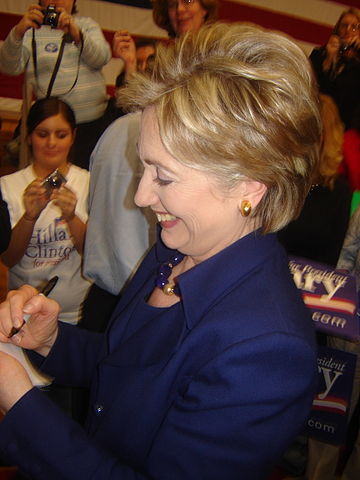Editorial: “Planet Hillary” sad use of media sensationalism

Editorial: media sensationalizing Hilary Clinton
January 30, 2014
Seeing Hillary Clinton portrayed as a bulbous, flesh-colored planet seemingly orbiting all alone out in an unknown galaxy is certainly an image that sticks with you.
This was the image that held the cover of New York Times Magazine on Jan. 24, and it caused quite a reaction from a magazine that is published each Sunday along with the Sunday edition of the New York Times. Parodies of the cover quickly began to make their rounds on the Internet: Planet Hillary became Miley Cyrus’ wrecking ball, a new addition to the children’s book “Goodnight Moon” and YouTube’s Annoying Orange. If the New York Times Magazine was looking for a swift reaction, it certainly got one.
Some have brought forward the argument that the cover was a poor decision because of how it portrayed a woman in politics, something they argue that would never have been done to her male counterparts. Archives of the issue’s past covers seem to uphold this claim with many male politicians shown in serious portraits. Sarah Palin, who has formerly been on a cover, was also made into a floating head, but with less Photoshop. Though this question of judgement used in portraying female politicians is a point to consider, it is not the main thing that should worry you.
The magazine has a blog that discusses why certain decisions were made for stories and covers. The blog concerning the Planet Hillary cover shows multiple conceptions of how the cover could have appeared accompanied with commentary. At one point Arem Duplessis, who wrote the blog, stated on an earlier design that it “had the humorous element I was looking for, but the land mass making up the hair felt forced to me.”
It is this word “humorous” that should catch. This word to describe the cover of a publication that deals in more serious, long-form journalism more than hints at sensationalism. Was this the only way the New York Times Magazine thought that people would be interested in the piece? The story that goes with the cover focuses on the inner workings of Hillary’s supporters, aides and “team” from the old to the new and how this will play for her if she decides to run for president in 2016: a fairly serious piece, though tarnished by further orbit puns and flowcharts.
Media seems to feel the need to liven up the news more and more instead of allowing solid journalism to speak for itself. The New York Times Magazine went for a gasp affect that would get people talking, but people were talking about all the wrong things. Yes, publications want their work to appeal to as wide an audience as possible, but cheapening the news through gimmicky covers is not the way to do it.
















